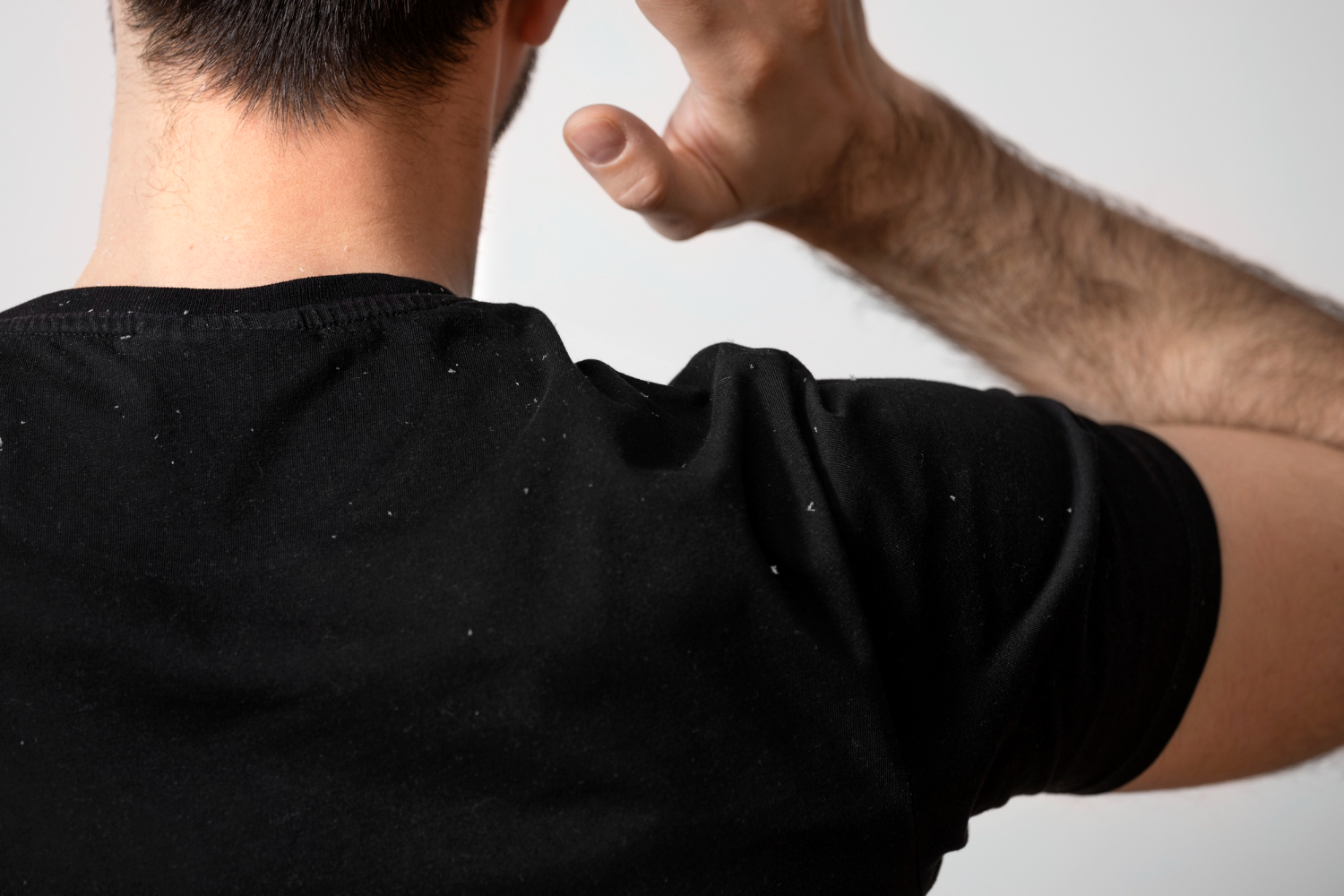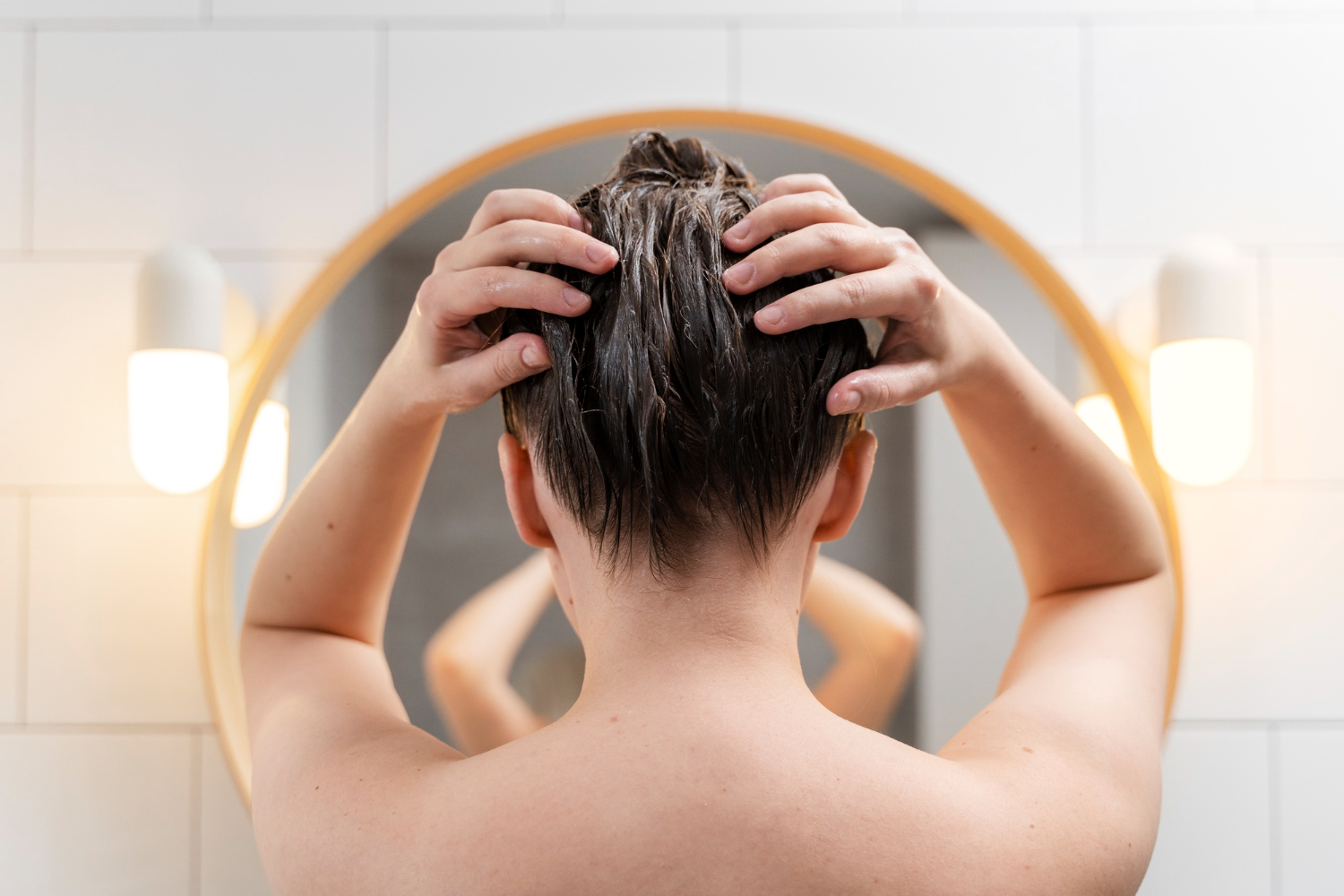
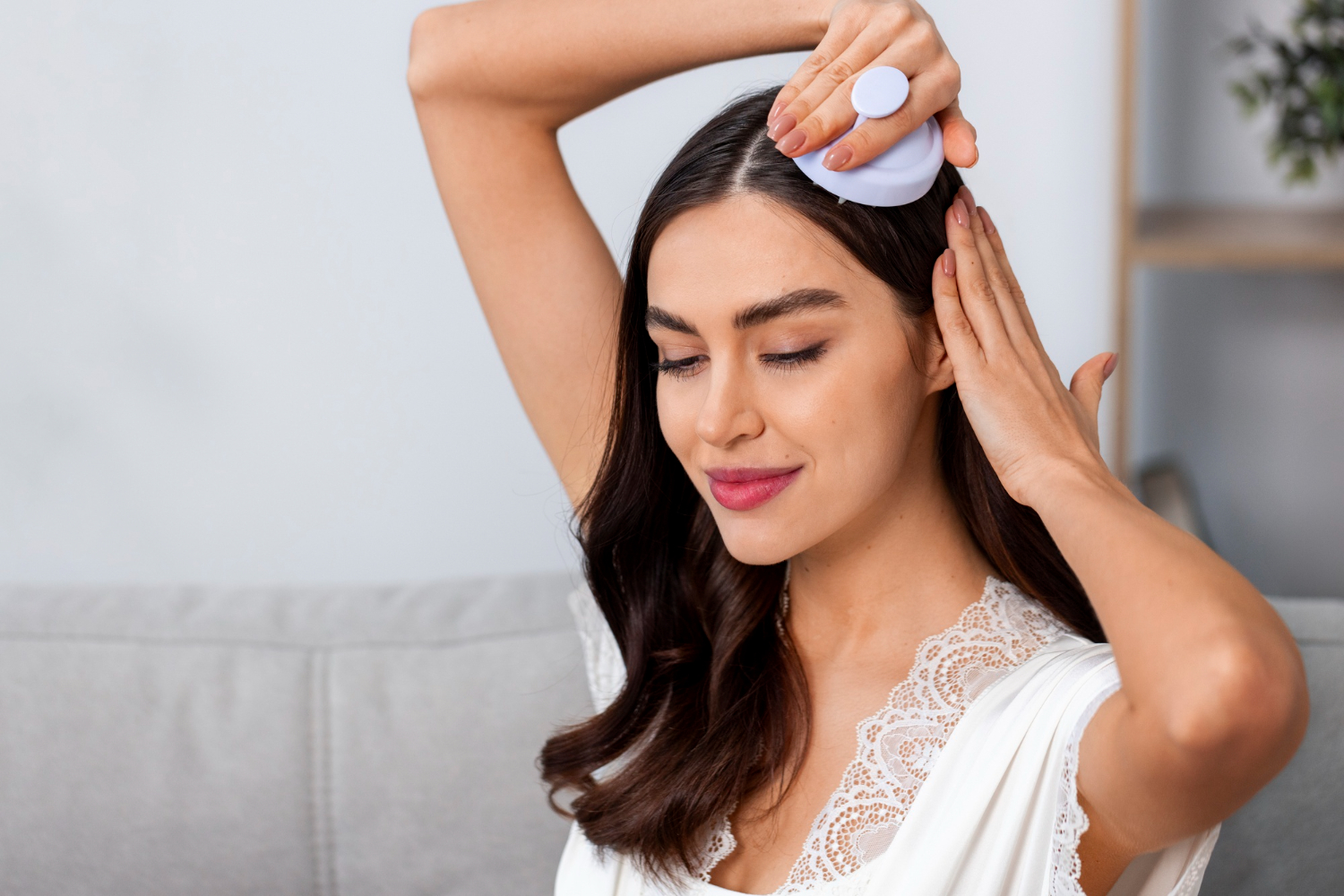
A luscious mane of hair isn’t just a sign of beauty; it’s also an indicator of a healthy scalp. Your scalp’s health plays a pivotal role in the overall appearance and vitality of your hair.
Scalp exfoliation involves the removal of dead skin cells and excess oils from the scalp, promoting hair growth, reducing dandruff, and enhancing hair texture. But here’s the secret to truly unlocking its benefits: customizing your scalp exfoliation routine according to your hair type.
Your hair is as unique as you are, and understanding its specific type is the first step to crafting an effective hair care routine. Hair types are often classified into four categories: straight, wavy, curly, and coily. Each type has distinct characteristics that influence its behavior, structure, and overall care needs.
Straight hair tends to be sleek and shiny but can become greasy quickly due to its direct path for oil distribution. Wavy hair has gentle bends, striking a balance between straight and curly. Curly hair forms well-defined curls, while coily hair showcases tight, spring-like curls. These differences in hair structure affect oil distribution, moisture retention, and susceptibility to frizz.
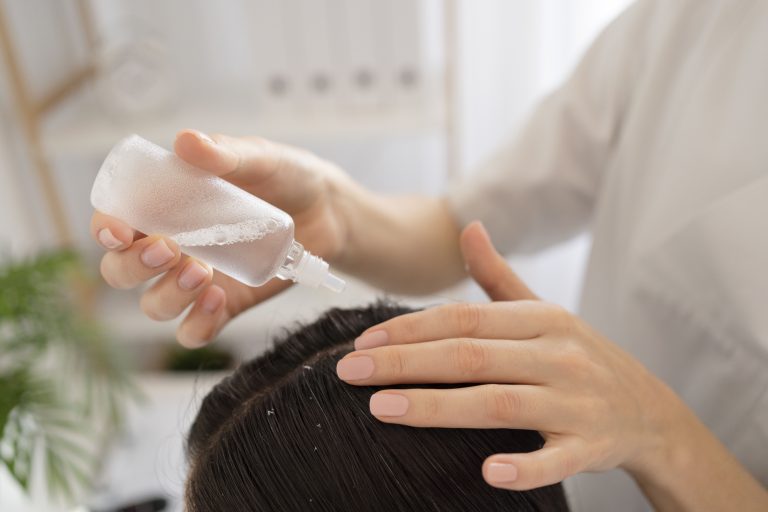
Just like the skin on your face and body, your scalp sheds dead skin cells. However, factors like hormonal changes, pollution, and product buildup can disrupt this natural shedding process, leading to an array of scalp issues.
This is where scalp exfoliation – a part of scalp treatment comes in. Typically, there are three scalp exfoliation methods: physical (scrubs), chemical (acids), and enzymatic (enzymes). By manually or chemically exfoliating the scalp, you accelerate the removal of dead skin cells, unclog hair follicles, and create an optimal environment for hair growth. Physical exfoliation involves the use of scrubs or brushes, while chemical exfoliation employs acids to dissolve dead skin cells. Enzymatic exfoliation uses natural enzymes to break down debris on the scalp.
Just as your hair type determines your shampoo and conditioner preferences, it also influences the type of exfoliation that suits you best. One size does not fit all when it comes to treatments for the scalp. Exfoliation methods should be tailored for different hair types:
Straight hair tends to be sleek and smooth but can quickly become weighed down by excess oil. For this hair type, a light exfoliation approach is key. Choose a gentle exfoliating product that effectively removes buildup without stripping away your hair’s natural moisture. Focus on areas where oil tends to accumulate, like the crown and roots. By maintaining a balanced scalp environment, you’ll promote healthy hair growth and prevent greasiness.
Wavy hair strikes a balance between straight and curly, requiring a balanced exfoliation approach. Opt for exfoliating products that maintain scalp health without disrupting your hair’s natural oils. Gently massage the exfoliator into your scalp, paying attention to the areas along your waves. This approach helps remove dead skin cells and prevent product buildup, ensuring your waves remain defined and bouncy.
Curly hair possesses its unique charm but is prone to dryness and frizz. When exfoliating curly hair, prioritize hydration and gentleness. Choose exfoliating products that incorporate hydrating ingredients to keep your scalp moisturized. Massage the exfoliator into your scalp using delicate circular motions, avoiding any tugging or tangling of your curls. By nurturing your scalp with proper exfoliation, you can maintain healthy curls that are vibrant and full of life.
Coily hair boasts tight, springy curls that capture attention, but it also presents challenges like dandruff and moisture retention. Regular exfoliation is essential for coily hair types. Opt for exfoliating products that combat dandruff while promoting moisture retention. Gently massage the exfoliator onto your scalp, ensuring even coverage despite the texture of your coils. This approach not only supports a healthier scalp but also encourages your coils to flourish.
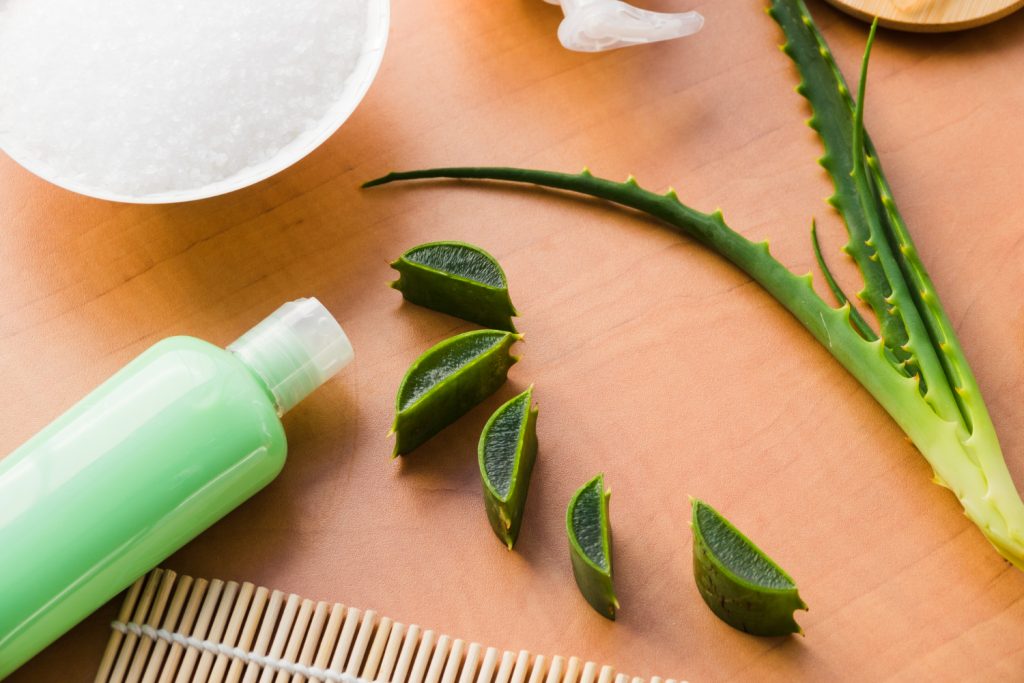
Different hair types have distinct needs, and the right ingredients can make all the difference in achieving optimal results.
Salicylic Acid: Ideal for straight and wavy hair, salicylic acid gently exfoliates the scalp, unclogs follicles, and regulates oil production. It’s especially effective in combating dandruff and preventing greasiness.
Glycolic Acid: Suitable for wavy and curly hair, glycolic acid helps remove dead skin cells and promotes a more balanced scalp. It encourages moisture retention, enhancing the vibrancy of your waves and curls.
Jojoba Beads: Perfect for curly and coily hair, jojoba beads offer a physical exfoliation that doesn’t strip the hair of its natural oils. They help maintain scalp health while preventing frizz and dryness.
Charcoal: Beneficial for all hair types, charcoal absorbs impurities and toxins from the scalp, promoting a cleaner and healthier environment. It’s particularly effective for detoxifying the scalp.
Tea Tree Oil: Suited for coily and straight hair, tea tree oil has natural antimicrobial properties that combat dandruff and scalp irritations. It helps maintain a healthy scalp for improved hair growth.
Aloe Vera: Great for all hair types, aloe vera soothes the scalp and provides hydration. It’s especially helpful for calming inflammation and maintaining moisture balance.
Creating a personalized scalp exfoliation routine doesn’t have to be complicated. Here’s a suggested step-by-step guide to help you get started:
1. Identify Your Hair Type and Needs: Determine your hair type (straight, wavy, curly, or coily) and consider any specific scalp issues you’re dealing with, such as dandruff or excess oil.
2. Choose the Right Exfoliation Method: Based on your hair type, select an exfoliation method that suits you best: physical, chemical, or enzymatic.
3. Select the Right Product: Look for exfoliating products that contain the ingredients mentioned earlier and are formulated for your hair type. Read product labels and reviews to make an informed choice.
4. Set a Frequency: Decide how often you’ll exfoliate your scalp. Typically, once a week is a good starting point, but you can adjust based on your scalp’s response.
5. Perform a Patch Test: Before using any new product, apply a small amount to a discreet area of your scalp to check for any adverse reactions.
6. Apply the Exfoliator: While in the shower, apply the exfoliator to your damp scalp. Use gentle circular motions to massage the product in, focusing on areas where buildup tends to occur.
7. Rinse Thoroughly: Rinse your scalp thoroughly to ensure all exfoliating product is removed. Follow up with a mild, sulfate-free shampoo and conditioner suitable for your hair type.
Each hair type has its own unique requirements, and by selecting the right exfoliation method, ingredients, and frequency, you can promote optimal scalp health, encourage hair growth, and enjoy the beauty of hair that shines from within. So, embark on this personalized journey to healthier hair, and revel in the transformation that tailored scalp exfoliation can bring.

